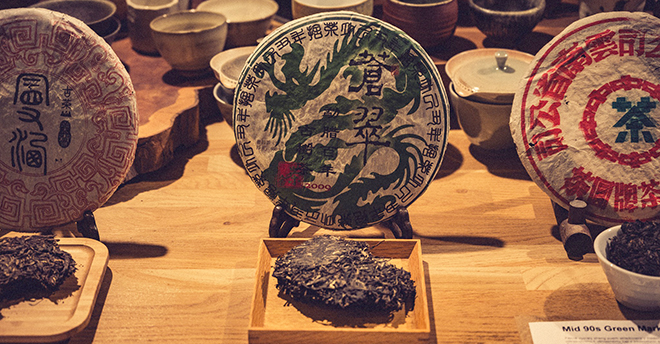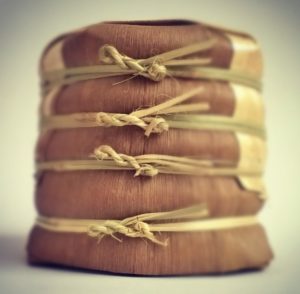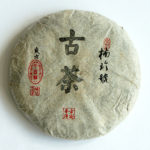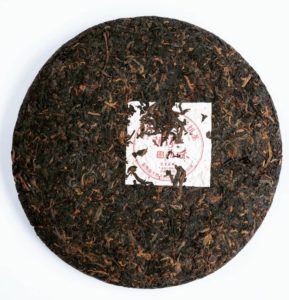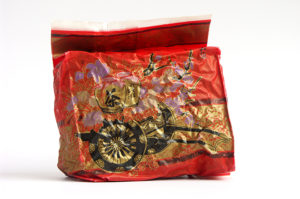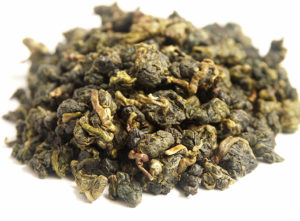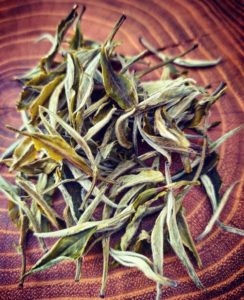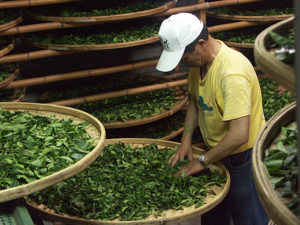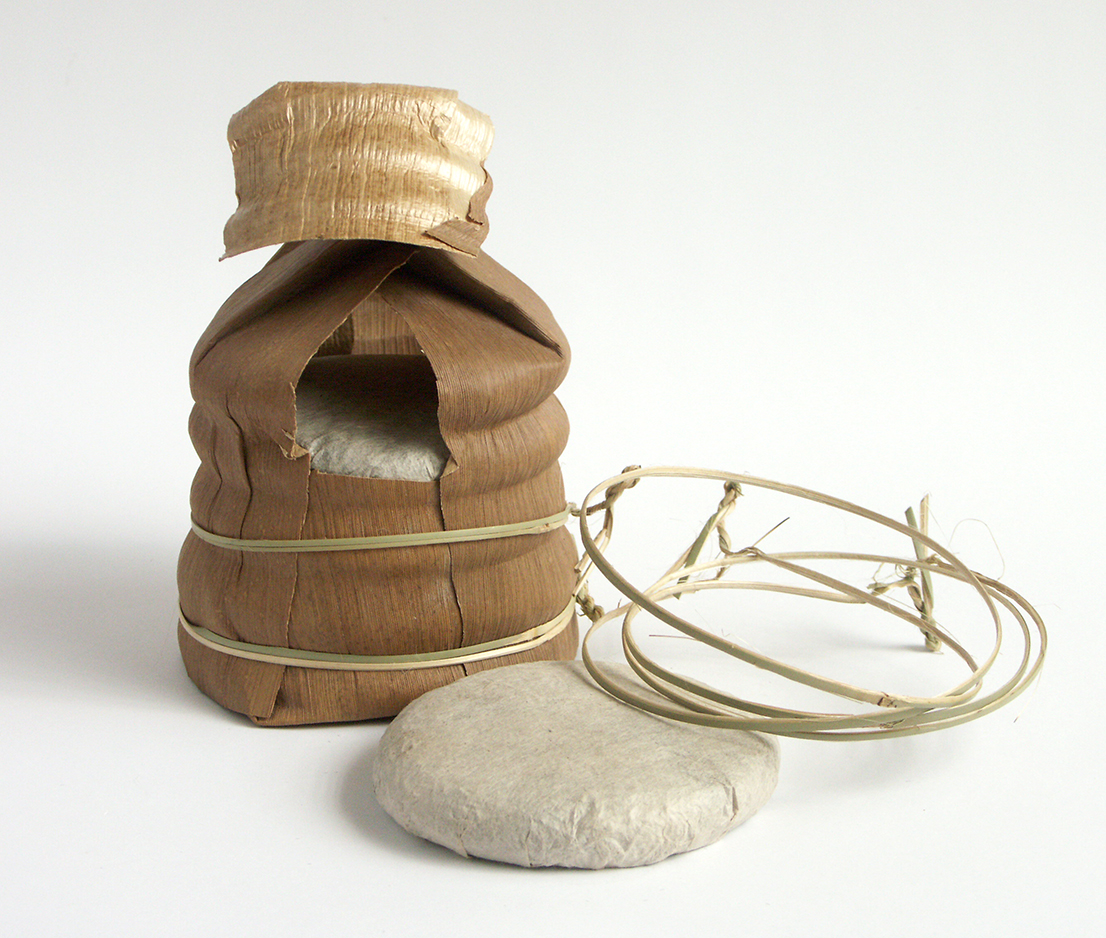The fresher the tea, the better, bolder and richer… or is it? Let us introduce you to the world of aged tea – they are little known but surprisingly tasty. How does taste change when tea ages? What processes do take place in the tea leaves? And what is the best way to preserve aged tea over long periods of time?
Aged or fresh?
When choosing tea, freshness is one of the main criteria. Who doesn’t look forward to the fresh spring flush, mountain Darjeeling or Chinese green teas and their lush, floral tones? Is there a clearer sign of the beginning of spring than a bowl of fresh tea? Why should we be interested in old tea, the processes behind its great taste and its story?
Although the tradition of tea ageing is as old as the art of processing tea leaves, it was only at the beginning of the 21st century that it became better known. Before, aged teas had been known only in narrow circles of tea lovers and in Chinese medicine.
Tea taste and aroma
When assessing the flavor and aroma spectrum, we divide tea aromas into two groups. First, we usually notice the attractive high tones of flowers, exotic fruits, citrus, and jasmine, followed by deeper and heavier shades of spices, wood, pickled fruit, honey, and cocoa. The high tones are the most unstable and, as a result, they eventually transform or disappear. The same goes for the attractiveness of fresh teas.
However, this does not mean that tea without high tones is entirely useless. Due to the complex chemical processes that continue to take place in the tea leaves even after drying, there is a gradual transformation of the character of stored tea. Sadly, this change is not always for the better. In aged tea, raw material storage conditions and quality are very important.
Tea transformation during ageing
The better tea you age, the better the result – that is a general truth. Even the aging process cannot miraculously turn a bad tea into a top-quality one. Some aspects of aged tea do get finer, such as the smoky or pungent tones of heavily baked oolongs, the earthiness of Shu Puerh, or the astringent tones of Sheng Puerh. Only characteristics already present are enhanced during aging.
There is always a certain risk that tea will deteriorate or be wasted as a result of poor storage. Tea is highly prone to absorbing smells and odors from its surroundings. It can also be damaged by significant changes in temperature and humidity as well as sunlight. All this should be considered in relation to long-term storage.
When we hear ‘aged tea’, Puerh usually comes to mind – a tea that is rather well known. It is matured for many years, undergoing gradual fermentation, changing its taste and, unfortunately, also its price. However, the tradition of tea maturing does not concern only Puerhs. The history of oolongs, and red and white teas are equally long. Aged teas are divided into two main groups, depending on whether fermentation is part of their maturing, or not.
Fermentation is a term sometimes incorrectly used or confused
with another important process – oxidation. Oxidation is a process that begins in the tea leaves after harvesting. It is a complex of many chemical reactions, the most important of which are enzymatic and non-enzymatic oxidation and condensation. When oxidation is supported during tea processing, the result is red tea (known as black tea in Europe). On the contrary, when oxidation is ended, mostly by heat, the result is green tea. The partly oxidized teas include oolongs, and white and yellow teas. Fermentation – transformation via the action of micro-organisms – is involved only in the production process of black tea (heicha). Both fermentation and oxidation are processes that take place in a controlled manner during the processing of tea leaves, but also arbitrarily during storage. What fermentation means in this article, is the fermentation of tea leaves, not the fermentation of a drink, such as sweetened kombucha tea.
Puerh and dark teas of the heicha type
It’s not just puerh
The group of teas, in the ageing of which fermentation plays an important role, is called heicha in China, which means dark or black tea. Their most famous representative is puerh, a tea from a large-leaf variety of the tea shrub grown in the Yunnan province in China. Other less-known teas of this type are Liu Bao from Guangxi, Liu An from Anhui, Fu Zhuan from the Hunan province, Qing Zhuan from Hubei or Lu Bian from Sichuan. Most fermented teas come from China. We know also fermented teas from South Korea (Chungtaejeon from Jangheung), Japan (Kurocha from Toyama, Awa Bancha from Tokushima, Goishicha from Kochi, Ischizuchi Kurocha from Ehime), Barma (Laphet So) or from the East Indian Assam (Singpho Falap).
Fermentation of tea leaves
Most of these teas are not primarily intended for immediate consumption; they are gradually maturing. During the slow oxidization over the course of several years, the teas undergo slow microbial fermentation. This is sometimes called post-fermented tea. Among the fermentation, agents are a wide range of fungal and bacterial communities, especially the Aspergillus niger mold, which is considered to be the primary fermentation agent in puerhs.
The core aspect that defines a successful slow maturation is the processing of fresh leaves. When their oxidation is ended, they are not exposed to very high temperatures for a long time. They are dried naturally in the sun. Due to the gentle treatment, part of the active substances is preserved in the leaves and helps to start the desired processes.
Let’s add that fermentation can also be part of tea processing, as is the case with dark Shu Puerh. When this tea is made, tea leaves are piled high, moistened with water and covered with an airtight cloth. It is regularly aerated and let to ferment for several weeks. In this case, the changes in tea leaves occur rapidly and there is not much more transformation during the post-fermentation phase that follows.
Storage of fermented teas
Successful aging of dark teas requires specific, fermentation-friendly conditions. This involves chiefly high air humidity (ideally between 70 and 80 percent), a temperature of 20 to 30 degrees Celsius, and sufficient oxygenation. Such conditions exist in the places where these teas are traditionally produced and in some Asian centers with a large Chinese community, such as Hong Kong, Taiwan, or Malaysia.
The storage of post-fermented teas in Europe requires creating similar conditions, which is technically quite demanding. Hardcore tea enthusiasts build so-called pumidors – containers of different sizes designed for the storage of post-fermented teas, most often puerhs. The container should be designed to allow for regulating humidity and temperature, which play a major role in the maturation of these teas. You can find plans for repurposing an old refrigerator as a pumidor with air humidification and heating. Or you can simply use leak-proof boxes and disposable bags for storing cigars, which help control air humidity. Even here, tea should be taken out from time to time and inspected for mold.
Taste transformation of aged puerh
Why do the taste, aroma, color, and texture of tea leaves change in the post-fermentation phase? During aging, tea leaves are in a constant transformation process due to the disintegration of cells. All cells are protected by cell walls. These are sometimes very thin and fragile as is the case in fruit and vegetables – short cooking causes the release – but also destruction – of many nutrients. On the other hand, some herbs or algae have very thick cell walls, which can be disintegrated only by sophisticated methods. Firm cell walls can also be removed by aging, which is exactly what happens in post-fermented teas.
Over many years, tea-leaf cells decompose, and their content is released and mixed. The more plant oils are released, the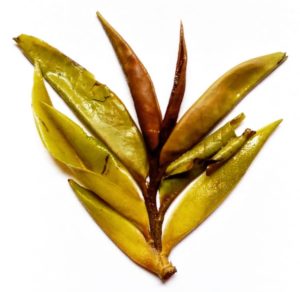 smoother and creamier the tea becomes; the more sugar is released, the sweeter it is, and the more essential oils are released, the more aromatic the tea is. In addition to a significant change in taste, there is also the release of amino acids and trace elements beneficial to the human organism. Harmful substances, such as caffeine or tannic acid, evaporate after the decomposition of the cells. Rough and astringent tones disappear while bitter coldness turns into a gentle and warm character of the tea. Sharp, pungent, and astringent flavors get rounder and gradually fade away, while denser, earthy, spicy, or exotic tones emerge and are miraculously layered on top of each other. Such tea is far more refined and complex. Puerh tea leaves and their infusion darken only slowly. Starting on light golden green and going through light brown or orange to dark red-brown.
smoother and creamier the tea becomes; the more sugar is released, the sweeter it is, and the more essential oils are released, the more aromatic the tea is. In addition to a significant change in taste, there is also the release of amino acids and trace elements beneficial to the human organism. Harmful substances, such as caffeine or tannic acid, evaporate after the decomposition of the cells. Rough and astringent tones disappear while bitter coldness turns into a gentle and warm character of the tea. Sharp, pungent, and astringent flavors get rounder and gradually fade away, while denser, earthy, spicy, or exotic tones emerge and are miraculously layered on top of each other. Such tea is far more refined and complex. Puerh tea leaves and their infusion darken only slowly. Starting on light golden green and going through light brown or orange to dark red-brown.
Over time, an ongoing microbial fermentation together with many other chemical processes takes place in tea leaves. The taste and aroma of tea are most affected by oxidation, hydrolysis, and the Maillard reaction. In post-fermented and all other teas, these processes take place simultaneously and are influenced by physical conditions.
Aged oolongs, white and red teas
Light or dark oolong?
Although the popularity chart of aged teas is dominated by puerh, we must not forget about white and red teas – and oolongs! In the home of tea, China, these are represented mainly by rock oolongs from Wuyi (Yancha), traditionally baked oolongs from Anxi in the Fujian province, and the Dan Cong oolong from Guangdong. Taiwanese teas include Dong Ding from Lugu, Tie Guan Jin from Muzha, and Bao Zhong from the Wenshan Mountains. These teas are typical for a certain degree of maturation. This doesn’t always involve long-term storage. Often, such tea is only left to “breathe” for a few weeks or months. The more intense baking of traditionally processed oolongs not only affects their taste but also conditions them for longer storage. In places with higher air humidity, the baking of tea leaves works partly as a preservative, without which leaves with more residual moisture would quickly degrade or even become moldy. This is why baking is repeated regularly during maturation.
Oolong leaves are only partially oxidized during processing and at some point, their oxidation is ended by heat. Due to this, and also due to subsequent baking, they tend to keep on oxidizing during storage. The most susceptible to external influences – and thus to rapid changes in taste and aroma – are lightly oxidized oolongs and green teas. First comes the change of aroma. It begins to weaken and fade to disappear almost completely over the years. However, new – deeper and more complex – tones may appear under the vanishing aroma layers. Over time, the color and structure of these teas also change. After many years, green leaves begin to turn yellow and brown. Shine and clarity begin to disappear and the tea becomes dull, sometimes it feels dusty-like. This is due to the decay of the cells on the surface of the leaves.
This is why green teas and light oolongs are not archived as often as dark teas: they lose their most attractive features – liveliness and freshness – at the very beginning of aging. However, after a few years, they develop incredibly interesting aspects as a result of complex chemical processes: intricately layered tones of exotic fruits, ginseng, spices, or nuts appear. Such a mix is sometimes harmonious, sometimes complicated, and sometimes distracting. In such a case, the tea is often baked again, which neutralizes the unwanted tones. Much more common is the aging of darker, more oxidized teas – oolongs or red teas.
White teas
White teas are definitely worth mentioning. Their lightness and taste profile, which are similar to green teas and oolongs, might give the impression that they are not suitable for aging. However, the reality is quite different. The transformation of aged white teas is very harmonious and balanced. They get sweeter and become more complex and subtle. The tradition of aging white teas is very old and often practiced in Chinese medicine. It attributes white tea to extraordinary powers, which multiply as they age.
The aging of white teas does not include fermentation, which makes their storage far less technically demanding. There is no need to keep them constantly at higher air humidity and temperature. All we need is to store such tea in dry and dark places with minimal airflow and no access to foreign odors. In the past, teas were commonly stored in large clay or porcelain containers with a lid. It is also advisable to store at least a certain amount of tea (500 grams). For instance, a five- or ten-gram sample will tend to degrade rather than age successfully. Let’s talk about what happens in tea leaves during aging.
Other important processes in aging tea
Oxidation – interaction with air
Do you also let a bottle of wine breathe after opening and see its taste change over an hour or two? In this case, the change in taste is almost exclusively due to oxidation processes. Tea leaves also interact with oxygen.
Oxidation is a natural chemical process that begins the moment the leaves are picked. Processing fresh tea leaves almost always involves either speeding up or stopping oxidation. During oxidation, tea leaves become dark: green teas are very little oxidized while red teas are oxidized significantly. Oxidation in tea leaves is stopped by heat, but not entirely. Slight oxidation processes continue during storage, even when the tea is carefully sealed.
The oxidation process breaks down precursors such as glycosides or lipids. These are compounds naturally present in tea, which contribute to the spectrum of its flavors and aromas. They are transformed into flavanols (e.g. β-ionone, which causes the woody taste of tea), hexanol (which is behind the leafy, vegetal taste), and many other chemicals. During oxidation, the nutritional composition of tea also changes. The antioxidant compounds contained in tea naturally merge into larger molecules. New, different antioxidants are formed and the levels and types of nutrients present in the tea change.
Hydrolysis – interaction with water
After drying, about 3 percent of moisture remains in any tea. This is why degradative reactions caused by water occur in the long run. Some aromatic compounds such as terpenes (e.g. linalool) are glycosidically bound in fresh tea leaves. The aromatic compounds with this type of bond are not recognizable in their taste or aroma. However, interaction with water can “unbind” them and they can become detectable by the senses. Hydrolysis can thus present in many unpredictable ways, depending on the chemical components already present, many of which have the potential to affect the taste and aroma of tea.
The Maillard reaction
Golden brown bread crust, caramelized onion, or beautifully baked chicken skin are all examples of the Maillard reaction. It is a non-enzymatic reaction between carbohydrates and amino acids or proteins. It usually occurs at temperatures of 140 to 165 °C and produces important compounds that are interesting for the senses, which give food a characteristic color, smell, and taste. In the case of tea, the Maillard reaction can take place in the final stage of the processing of tea leaves, during drying. In some kinds of teas, a certain degree of baking is desirable, while in others it is not.
There also is the Strecker degradation, which is considered a subset of the Maillard reaction. It is a similar chemical process, which does not require high temperatures and takes place in stored tea leaves. This reaction transforms amino acids, the building blocks of proteins, into volatile aromatic compounds called aldehydes. Aldehydes typically have characteristic odors and many of them can be smelled even in very low concentrations, which makes them an important part of the complex tea aroma.
All these complicated chemical interactions are often interconnected and combine in fascinating ways. During ideal maturation, the complex chemical composition of tea is transformed into something new and beautiful.
When writing even a slightly specialised article about tea, we keep running into inaccuracies in terminology. Apart from the misuse of the terms ‘fermentation’ and ‘oxidation’, the greatest confusion is caused by the poor distinguishing between black and red teas.
Tea is a cultural plant that originally comes from China, where tea making has the longest tradition. China is also where the division of teas into six groups – green, red, white, black, blue and yellow – comes from. Green, yellow and white teas are called the same in Czech. ‘Blue tea’ is called ‘oolong’. ‘Red tea’ is what we call ‘black tea’. And ‘black tea’ (heicha) is a ‘(post-)fermented tea’. The problem is that the term ‘black tea’, which denotes completely oxidised teas, called ‘red teas’ (hongcha) in Chinese, is so widespread that it has completely overshadowed its original meaning. This is why we use the common term ‘black tea’ to describe completely oxidised teas in our e-shop. Anyhow, in this article we use Chinese terminology, where black and red teas are two separate categories.
Resources:
The Microbiome and Metabolites in Fermented Puerhs Revealed by High-Performance Sequencing and Quantitative Multiplex Analysis of Metabolites
https://www.ncbi.nlm.nih.gov/pmc/articles/PMC4918958/
The Characteristics of Korean Traditional Post-Fermented Tea (Chungtaejeon)
intechopen.com/chapters/71634
Photos: Tea by Peter, Klasek Tea archive

